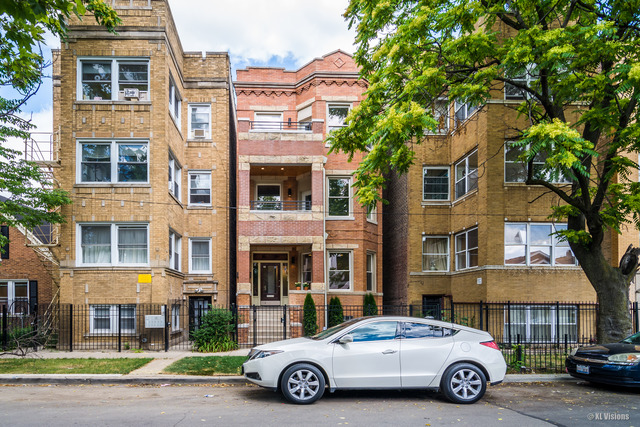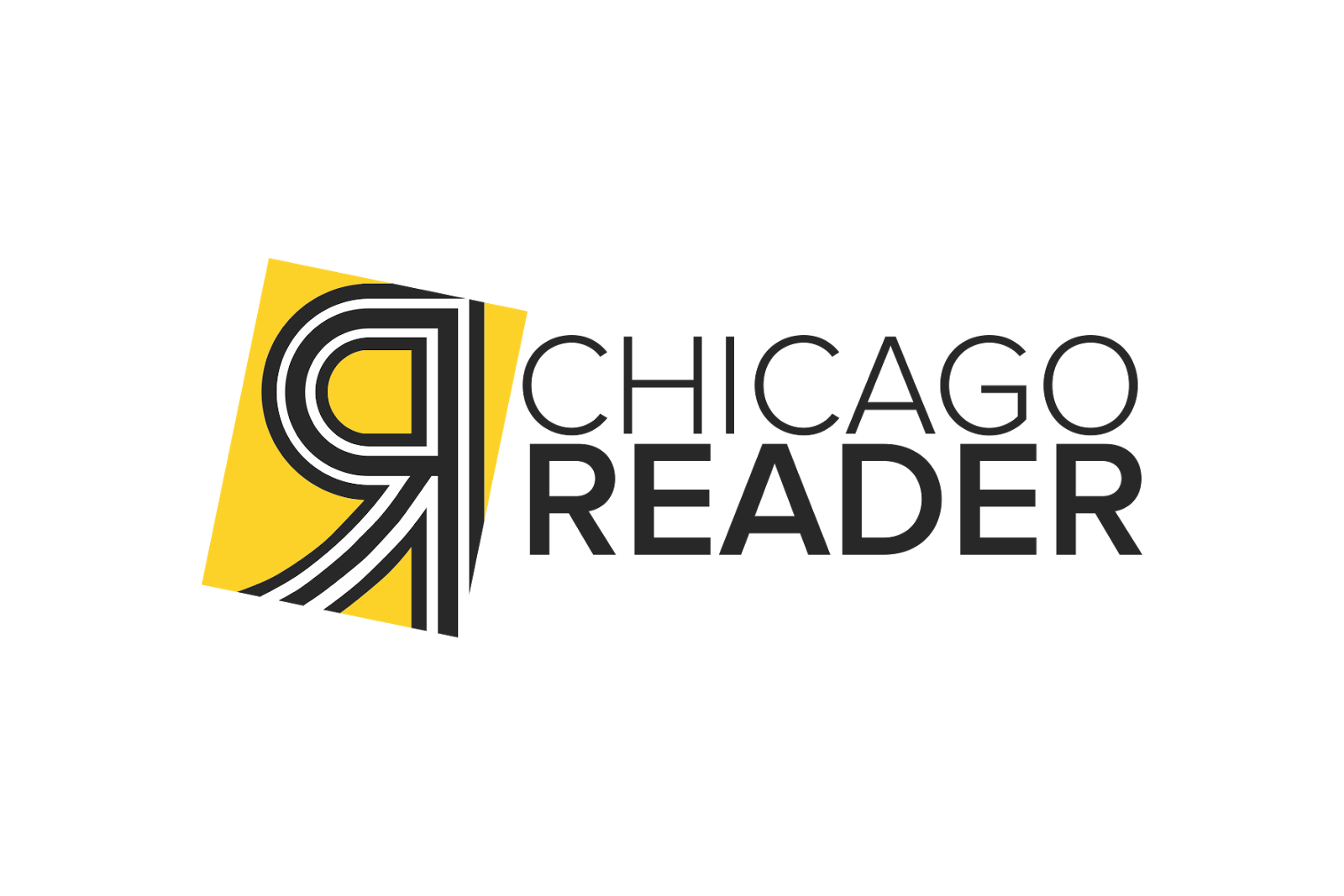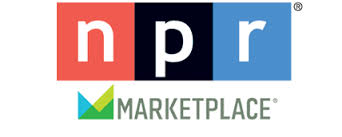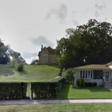Land Bank’s Foreclosure Sales Helping Stabilize Neighborhoods
By Dennis Rodkin, Crain’s Chicago Business | November 22, 2016
A Cinderella story is playing on 101st Street in the city’s Washington Heights neighborhood, and there are more than 200 others like it scattered around the city and suburbs.
After lingering in foreclosure for almost six years, a modest 1960s bungalow started 2016 with mold growing on its basement walls, holes in its roof and busted pipes from standing empty for at least one winter. Now it’s a fresh-looking place with a new roof, stylish tile and fixtures in the updated kitchen and baths.
 “This used to be one of the worst houses I’d seen,” said Jason Williams, who rehabbed the Washington Heights bungalow with his wife, Esther, after buying it from the Cook County Land Bank in August for about $17,000. “We had to do everything to it, all the way down to the studs.” The Williams’ foreclosure rehab firm, Ultimate Real Estate Group, put the house on the market in early November, asking $154,900.
“This used to be one of the worst houses I’d seen,” said Jason Williams, who rehabbed the Washington Heights bungalow with his wife, Esther, after buying it from the Cook County Land Bank in August for about $17,000. “We had to do everything to it, all the way down to the studs.” The Williams’ foreclosure rehab firm, Ultimate Real Estate Group, put the house on the market in early November, asking $154,900.
The house is one of 230 properties, nearly all residential, that the land bank has sold to rehabbers since late 2015, according to a report the organization’s officials compiled for Crain’s.
Together, the 230 make up “a really good effort to help our neighborhoods get restabilized,” said Diane Limas, a longtime rental-housing activist who is part of Roots (Renters Organizing Ourselves to Stay). As part of a partnership, ROOTS acquired 19 apartments in nine foreclosed two- to four-flats in North and Northwest Side neighborhoods through the land bank. The group is rehabbing them and will then put them up for rent.
Of the 230 land bank properties sold, 187 were sold this year and 43 in the latter months of 2015. They are in 13 Chicago neighborhoods and 14 suburbs, according to Rob Rose, the land bank’s executive director.
In the previous two years, the land bank spent $7.2 million to acquire the 230 properties from foreclosing lenders and others. (The land bank paid nothing to acquire some one-third of the properties; banks and others gave them to the land bank at no cost.) It has sold them for a total of $8.5 million, clearing about $1.3 million.
The report did not specify what the land bank spent on the 126 properties it hasn’t yet sold.
Now, having unloaded about two-thirds of the 356 properties it has acquired since it started buying in mid-2014, the land bank “has reached self-sustaining status without using taxpayer dollars,” said Bridget Gainer, the Cook County Commissioner who quarterbacked its creation in early 2013.
The land bank’s startup funding was $4.5 million, provided in 2014 by Lisa Madigan, Illinois attorney general, out of the state’s $1 billion share of a $25 billion national settlement from the nation’s five largest mortgage servicers in 2012.
CLEANED-UP TITLES
The agency isn’t a pass-through, acquiring a property merely to turn around and sell it. Before selling the properties in poor physical condition to rehabbers, the land bank puts them through a kind of cleanup that can be complex. The land bank cleans liens, fines and other red tape off the property’s title, a process Williams estimates has saved his firm as much as $10,000 in legal fees on each of the four houses it’s bought from the land bank.
“Cleaning up the title is huge,” said Frank Montro, a Keller Williams agent who has represented more than a dozen former land bank homes after their rehab, including a three-bedroom on South St. Louis Avenue in Auburn-Gresham that is on the market now at $214,900. “The back taxes and liens can make it unfeasible for a small rehab firm to take on a house,” Montro said. As a county program, the land bank has access to red tape-cutting maneuvers a rehabber may not.
After selling a property to a rehabber, the land bank holds on to some controls: The contract requires that redevelopment happen within 12 months and that the land bank inspect all work. The land bank also holds a “soft mortgage” on the property until it’s resold to a homeowner. All of these controls, Gainer said, point to the bank’s goal of “harnessing the market to help stabilize communities,” and ward off fast-buck investors.
Williams said there’s one more control that works to his advantage: The land bank sells only to local firms in an effort to keep money and jobs in the area it serves. What that means for Williams and his wife is that “we’re not bidding against people from California. When they’re spending $300,000 to get properties out there but they can get them here for $50,000 or $100,000, they think it’s cheap, and they outbid us.”
Gainer said the 230 properties have been sold to 135 developers. The land bank has sold just 10 of its properties directly to end-user homeowners, she said, but a new effort next year may increase that.
The Cook County Land Bank Authority: An Idea Whose Time Has Come
By Yvette LeGrand, The South Shore Current | August 2016
THE COOK COUNTY LAND BANK AUTHORITY (CCLBA) was created in 2013 to address the large inventory of vacant residential, industrial and commercial property in Cook County. Its goal is to return vacant land and abandoned buildings to productive use while preserving and revitalizing neighborhoods.
 The Land Bank Authority can acquire, hold and transfer interest in real property throughout Cook County in order to promote redevelopment and reuse of the vacant, abandoned, and foreclosed properties too often prevalent in our community. “We want to save vacant properties and reduce their potentially blighting influence on neighborhoods” said Rob Rose, Executive Director of The Cook County Land Bank Authority. The Land Bank Authority supports efforts to stabilize neighborhoods and stimulate new development in line with the goals and priorities of community stakeholders and government partners. It can wipe out the liens and encumbrances that can make redevelopment and reuse of festering buildings here-to-fore impossible by neighbors and other local stakeholders.
The Land Bank Authority can acquire, hold and transfer interest in real property throughout Cook County in order to promote redevelopment and reuse of the vacant, abandoned, and foreclosed properties too often prevalent in our community. “We want to save vacant properties and reduce their potentially blighting influence on neighborhoods” said Rob Rose, Executive Director of The Cook County Land Bank Authority. The Land Bank Authority supports efforts to stabilize neighborhoods and stimulate new development in line with the goals and priorities of community stakeholders and government partners. It can wipe out the liens and encumbrances that can make redevelopment and reuse of festering buildings here-to-fore impossible by neighbors and other local stakeholders.
The CCLBA can partner with a local organization or simply convey a parcel to an appropriate developer who has a plan to improve a block and/or create jobs and provide affordable housing stock to new owners seeking to put down roots and strengthen the community. On its website, the CCLBA features before and after photos of its first completed project, a home at 8301 S. Cregier. It was rehabbed by a local couple and sold to new owner-occupants. “ln this case:’ said Rose,” we took a house set for demolition, stopped the demolition process, found a husband and wife team to rehab it and it now has new owner occupants:’ “It set a great example for people in the neighborhood having ownership in the neighborhood:’
This unique community redevelopment and investment tool was created to specifically address the real property issues that are so difficult for locally focused residents to overcome. The CCLBA can acquire and convey previously tax-delinquent and/or municipally encumbered properties and efficiently transfer them to responsible new owners. It can sometimes even overcome the community challenges inherent in so called “heir property’; where a home or other small residential building that was previously occupied by a caring owner sits deteriorating for years. Neighbors suffer as relatives have waged a family battle over who should or who can afford to carry the property that has been the family asset into the future. The CCLBA can also strategically accept property donations.
To prevent further negative community impact, successful transferees must have sufficient capacity to acquire and redevelop the property awarded to them. Properties must be professionally redeveloped within 12 months of conveyance in accordance with code and the CCLBA places a removable lien on the property to prevent “flipping.” But the lien would be released prior to sale of a new homeowner moving into a newly rehabbed home.
Currently, there are 21 properties in and around South Shore that are being redeveloped by new owners through the Land Bank. If this way of moving the community forward is of interest to you and/or your organization, visit www.cookcountylandbank.org or call 312/603-8015 to learn about how this program can help you create a stronger community and a better life.
The Cook County Land Bank is chipping away at abandoned properties one house at a time
By Maya Dukmasova | August 12th, 2016
Imagine a county agency that doesn’t rely on taxpayer dollars to operate. And not only that, but it also generates wealth and helps revitalize struggling neighborhoods.
It’s not a fairytale, but how boosters describe the successes of the Cook County Land Bank Authority, now in its third year of operating.
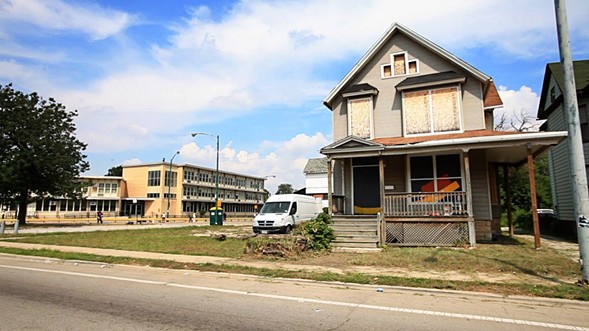 The land bank’s purpose is twofold: to buy and resell abandoned property for rehab or redevelopment, and to clear land of blighted structures and revert it to redevelopment or community uses like parks and gardens. And since it’s inception in 2013, the land bank has acquired 335 properties in Chicago and suburban Cook County—mostly blighted, abandoned homes, but also vacant lots, commercial buildings, and industrial sites—in an effort to reverse the devastation of the foreclosure crisis and resulting population loss.
The land bank’s purpose is twofold: to buy and resell abandoned property for rehab or redevelopment, and to clear land of blighted structures and revert it to redevelopment or community uses like parks and gardens. And since it’s inception in 2013, the land bank has acquired 335 properties in Chicago and suburban Cook County—mostly blighted, abandoned homes, but also vacant lots, commercial buildings, and industrial sites—in an effort to reverse the devastation of the foreclosure crisis and resulting population loss.
Of those 335 properties—which the land bank mostly acquires through donations from banks and individuals—190 have been sold to developers for rehab. Of those, nine have then been resold to new owners.
This may not seem like a lot, but the land bank began acquiring properties two years ago with just a $4.5 million grant and a landscape of more than 51,000 abandoned addresses throughout the county—one main result of the subprime mortgage crisis.
The land bank has the authority to acquire abandoned properties tied up in foreclosure proceedings or weighed down with back taxes and other fines, wipe their financial slates clean, then sit on them them until an interested buyer comes along.
Click here for the complete article posted on the Chicago Reader’s website! All of this is possible by a terrific network of partners committed to making serious and positive change in our communities!
Rob Rose Selected as Member of Leadership Greater Chicago (LGC) 2017 Class of Fellows
Leadership Greater Chicago (LGC) announced today the 2017 Class of LGC Fellows. This select group of 38 accomplished and diverse individuals represents a cross-section of professionals from the corporate, nonprofit, government, and education sectors. They share the goal of effecting real change in the community. | July 20th, 2016
Leadership Greater Chicago (LGC) announced today the 2017 Class of LGC Fellows, which includes our very own Executive Director Rob Rose!. This select group of 38 accomplished and diverse individuals represents a cross-section of professionals from the corporate, nonprofit, government, and education sectors. They share the goal of effecting real change in the community.
Selected from more than 120 highly qualified candidates nominated by their employers, the Fellows will engage in a 10-month program where they will be immersed in key socioeconomic issues facing our city and the region, including education, economic development, healthcare, housing and infrastructure, criminal justice, and race. Additionally, the Fellows will have an opportunity to engage in small group projects of their choice to directly address a challenge or need in the community. These projects will be informed by the information and ideas shared in the classroom, engagement with other Fellows, and personal experiences.
Fellows selected for Chicago’s premiere program for developing civic leaders have demonstrated remarkable professional achievement early in their careers, a commitment to their community, and the potential to influence effective change.
The 2017 Fellows advanced through a highly competitive selection process, including a comprehensive written application and interviews with graduates of the LGC Fellows Program. The LGC Board of Directors approved the selection of this year’s class.
“The LGC Fellows Program is rooted in the belief that a small, diverse group of committed leaders can change the world,” said Maria Wynne, Chief Executive Officer of Leadership Greater Chicago. “The hallmarks of our program are access to world class thought leaders, priceless community experiences, and the peer learning and friendships that take shape among the Class. The personal connections and sense of responsibility with which they emerge drive their lifelong commitment to effect real change in the region.”
Click here for the complete list of Leadership Greater Chicago’s 2017 Fellows.
CCLBA Turns to DAWGS to Secure Their Properties
The Cook County Land Bank Authority consulted with the security experts at Door & Window Guard systems (DAWGS) to secure their vacant properties. | February 9th, 2016
The Cook County Land Bank Authority (CCLBA) was formed to stabilize blighted neighborhoods and stimulate redevelopment and return properties to productive use. The CCLBA also promotes economic development by generating jobs and providing affordable housing.
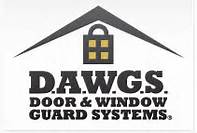 The CCLBA deals with a host of asset management issues as it holds vacant properties. Lock boxes often go missing or keys are not returned. Front doors can be compromised resulting in break-ins. These issues slow down the process of getting properties into the hands of qualified investors and homeowners.
The CCLBA deals with a host of asset management issues as it holds vacant properties. Lock boxes often go missing or keys are not returned. Front doors can be compromised resulting in break-ins. These issues slow down the process of getting properties into the hands of qualified investors and homeowners.
The CCLBA took a proactive approach and consulted with the security experts at Door and Window Guard systems (DAWGS). DAWGS listened to the concerns of the CCLBA and created a customized solution to alleviate the problems associated with missing lock boxes and keys. DAWGS installed their proprietary coded steel doors on CCLBA properties which allowed the CCLBA to control access to the properties without compromising the security.
“We made the decision to partner with DAWGS because they offered a solution to a serious, ongoing problem”, says Robert Rose, Executive Director of CCLBA. “Now that we are working with DAWGS, we no longer have these challenges; we are able to get vacant properties back to the community quicker, more efficiently and with fewer concerns on security.”
DAWGS steel door and window guards keep the CCBLA properties safe and secure from break-in. The coded door guards provide managed access to the property – without the hassles of keys or lock-boxes. The land bank can manage who enters the property and the contractors can feel secure and comfortable leaving their tools and equipment in the property. DAWGS is proud to support the mission of the CCLBA and is now the exclusive provider of vacant property security for the Cook County Land Bank Authority.
ABOUT CCLBA
The Cook County Land Bank Authority was formed in 2013 to address the growing inventory of vacant residential and commercial properties in Cook County, Illinois. The Cook County Land Bank Authority (CCLBA) is the largest land bank by geography in the United States – their mission is to acquire vacant property, hold it and then transfer the ownership of property throughout the county. This promotes redevelopment and reuse of vacant properties. Learn More
ABOUT DOOR AND WINDOW GUARD SYSTEMS
DAWGS (Door And Window Guard Systems) is a full service vacant property security company. Our flexible, fast-response teams install and remove DAWGS equipment to ensure that your property is always secure. DAWGS currently has operations in Illinois, Indiana, Michigan, Ohio, New York, New Jersey, Pennsylvania, Delaware, Maryland, Washington, D.C. and will be expanding into other new markets soon.
‘Zombie’ homes give Chicago operators an opportunity
By Dan Weissman

